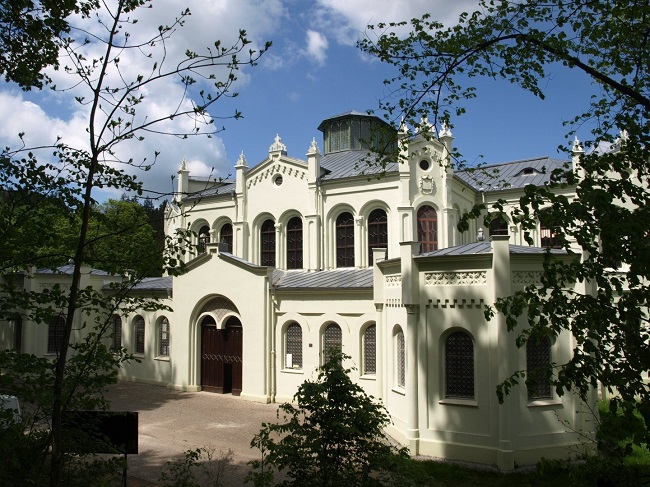
Tachov opened the Světce riding hall, its restoration took 23 years and cost 180 million.
 |
Tachov - Tachov today opened a reconstructed riding hall in Světce. According to experts, it is the second largest in Central Europe after the Spanish Riding School in Vienna. The rescue of the 162-year-old riding hall, which has been a national cultural monument since 2010, took 23 years and cost approximately 180 million CZK. The city was able to complete the last major stage thanks to a European grant from the IROP program amounting to 61 million CZK, allowing the monument to open to the public at the start of the tourist season. Its significance surpasses the borders of the region and the republic, said the mayor, Petr Vrána (Volím Tachov), to ČTK. In addition to tours, it will serve as an original multifunctional social and cultural center.
"About a third of the money came from IROP, a third came from the city, and the rest was made up of other grants from the Ministry of Culture, from the region, and others," the mayor stated. The last stage cost nearly 75 million CZK. The city will also complete outdoor seating and a parking lot.
"We are very proud of the riding hall and want to promote it everywhere and heavily 'utilize' it for cultural and social events, as well as weddings. The riding hall will come alive from April to October, with events happening every week," said Vrána. Culture Minister Martin Baxa (ODS) stated that the opening of the renovated riding hall, which stands out particularly for its architectural generosity, is an event of national significance. "Such buildings are very rare, even within Central Europe," he noted. According to the custodian and guide Pavel Voltr, the riding hall begins a new chapter today, precisely on the 160th anniversary of the death of General Alfred Windischgrätz, who had it built. "The general would be very surprised at how the building looks now," he added.
The neo-Romanesque and neo-Renaissance riding hall has opened all spaces and the tour route. There is a new exhibition on herbalism and the Czech Forest, period costumes, horse stables, a blacksmith's shop, a blacksmith's flat, an exhibition of ironware, a coachman's corridor, and living quarters for nobility and their guests. "We are making all spaces accessible, which is not common at any monument. Even in Vienna, you cannot access all spaces," said Voltr. Regular tours will be held in Czech, English, and German. "We are opening with Easter tours; in April, there will be tours every day from Wednesday to Sunday, and from June, even on Tuesdays. A whole concert season is already planned," he added.
The city has owned the riding hall since 1991. By 2008, it had managed to secure the structure statically, roof it, and restore the spaces. Since 2021, thanks to EU funding, it has built technical facilities, security, two elevators, and repaired façades, paintings, and the roof structure.
The riding hall, whose largest part is the riding arena measuring 40 by 20 meters, where the general showcased his horses, was built between 1857 and 1862 according to the plans of the Cheb architect Adam Haberzettl. The building is 60 meters long and 26 meters high, with all rooms for horses and visitors under one roof. The most precious part is the wooden roof structure and the glass ceiling, which also provided ventilation. "It is a unique combination of an aristocratic noble building with the concept of modern industrial architecture," said councilor Matouš Horáček (Volím Tachov).
The building deteriorated after World War II. "There was a gym for soldiers, Svazarm, and a large grain granary. In 1985, it was designated for demolition," Voltr said. The riding hall was left unguarded, and people ransacked it. In 1981, the Ministry of Culture removed it from heritage protection. In 1999, it was saved from demolition by a single vote in the council. In 2000, it was on the verge of collapse; the only thing that was in good condition was the roof structure. Repairs began thanks to a grant from the Ministry of Culture during the era of Pavel Dostál (ČSSD). After his death, state support began to decline, and the city received only lower hundreds of thousands of crowns from the ministry for decoration and minor repairs, and it waited for EU funding for many years.
The English translation is powered by AI tool. Switch to Czech to view the original text source.
0 comments
add comment
Related articles
0
01.10.2023 | The renovated riding hall in Světce near Tachov will be open for the whole season starting in 2024
0
24.04.2023 | Tachov is renovating the Světce riding hall for 72 million, the second largest in Central Europe
0
24.06.2021 | Tachov will start a complete renovation of the riding hall in Světec this summer
0
12.04.2017 | Tachov applied for grants to repair the monumental riding hall in Světce
0
08.09.2016 | Tachov is striving for subsidies for the renovation of the monumental riding hall in Světce












